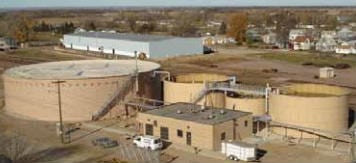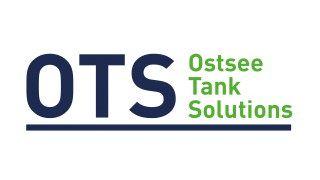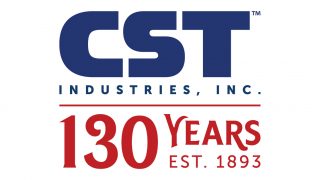WRITTEN FOR WATER AND WASTES DIGEST MAGAZINE
Co-authored by:
Mark Eklund, P.E., Columbian TecTank,
Jim Nelson, Valley Queen Cheese and Peter McCarthy, ADI Systems Inc.Valley Queen Cheese was founded in Milbank, South Dakota in 1929 by two Swiss immigrants with a knack for cheese-making and the drive to bring their version of the “Great American Dream” to life. Today the company employs more than 185 people from the surrounding communities and enjoys partnerships with 104 dairymen on the Northern Plains. Eighty years after Valley Queen’s first cheese was produced, new generations of the original founding families continue to own and manage the company.
Valley Queen takes pride in the exceptional quality of its cheeses. The company has received numerous awards through the years, including the Kraft Foods Rick Stuedemann Award for supplier excellence as well as several prizes at the U.S. Championship Cheese Contest. The company specializes in reduced- and low-fat cheddar and marbled cojack cheeses.
The community of Milbank has enjoyed the growth and prosperity of Valley Queen Cheese since its founding. Beginning in 1929, the city also accepted and treated the wastewater discharged by the facility. However, the company’s consistent growth eventually resulted in a wastewater stream that had the potential to overwhelm the city’s wastewater treatment facility.
In 2005 the company brought in an engineering firm familiar with dairy waste and determined that rather than build a joint system with the City of Milbank, Valley Queen would assume control and responsibility by constructing a wastewater treatment facility onsite. Valley Queen reviewed design build proposals and ultimately chose ADI Systems Inc. to construct the facility.
“ADI brought to the table a favorable proposal as well as the depth of industrial experience we were looking for,” said Jim Nelson of Valley Queen Cheese.
WHY ANAEROBIC DIGESTION
The scope of the project included pH adjustment, screening and equalization, a 2.2 million gallon Type S anaerobic ADI-BVF reactor, a twin-tank ADI sequencing batch reactor
 (SBR) system of 500,000 gallons, provision for cooling, reaeration and disinfection, and a control building and laboratory.
(SBR) system of 500,000 gallons, provision for cooling, reaeration and disinfection, and a control building and laboratory.
“We proposed an anaerobic digestion system because cheese processing wastewater is strong and warm, but it contains relatively high concentrations of fats, oils and grease (FOG) as well as degradable suspended solids,” said Peter McCarthy of ADI Systems, Inc. “The fats and solids make it difficult waste to treat in high-rate anaerobic reactors such as granular bed reactors, but make it an ideal wastewater for the low-rate ADI-BVF anaerobic reactor.”
ADI Systems Inc. specializes in design-build of anaerobic digestion systems. The wastewater treatment system built by ADI Systems Inc. also includes aerobic treatment using an SBR system, UV disinfection and final effluent reaeration. Aerobic treatment and subsequent steps were necessary to prepare the water for direct discharge.
Valley Queen chose an anaerobic digestion system for a variety of reasons. In general, anaerobic digestion results in low operating costs and the production of reusable energy in the form of methane-rich biogas. Two reasons for the low operating costs are a greatly reduced energy usage per lb. of COD treated when compared to aerobic treatment, and less biological waste sludge generation. The ADI-BVF reactor at Valley Queen Cheese allows for storage of the anaerobic sludge, and further digestion and storage of the waste aerobic sludge generated in the SBR system.
Continued below
“The staff can seasonally waste sludge from the facility and do not have to handle it on a daily basis, which is a big advantage,” said McCarthy.CHOOSING THE RIGHT TANK
While there are many factors which play into the development of a wastewater treatment system, choosing the right storage tanks is cornerstone to the project. The tanks must offer durability and low maintenance. For a design-builder such as ADI Systems Inc., the cost of the tanks is a significant portion of the total system cost, and remaining competitive in the industry is vital. The size of tank, proximity to tank suppliers and schedule also play into the choice of tanks.“We have used Columbian TecTank tanks for many years and some of our systems are 20 years old with many good years of performance left,” said McCarthy. “ADI Systems Inc. is a service-oriented company and we prefer to work with suppliers that have the same mentality. We’ve had a good working relationship with Columbian TecTank through the years, which is a reason why we chose them for this job.”
The project with Valley Queen Cheese required four tanks with sizes of 2.2 MG for the ADI-BVF, two tanks at 0.25 MG for the SBR reactors and one tank at 0.06 MG for the surge/effluent equalization tank. Because ADI Systems Inc. prefers to work with only one tank supplier on site and the Columbian TecTank bid was competitive, the tank company was awarded the job.
One of the most important considerations for the tanks in this project was the coating used. The lining had to be tough enough to withstand fatty acids and other corrosive materials and protect the tank walls both inside and out, and to ensure a long life with low maintenance requirements. Columbian TecTank specializes in bolted tanks, whose panel design offers a baked on coating and factory finish, ensuring the most consistent durability and quality, as well as fast and easy installation in the field.
“Bolted tanks offer the advantage of a factory applied coating, which provides excellent durability and longevity, along with a panel design that installs quickly and provides a cost effective solution,” said Mark Eklund, P.E. and product manager for wastewater market sales for Columbian TecTank.
Concrete and field welded tanks are options, but concrete does not offer a protective coating and many welded tanks are coated in the field, subject to environmental conditions such as temperature and humidity. Both require significant installation timelines. Bolted panel tanks are quicker to build than concrete or field welded and because of their panel design may be put into service even in inclement weather.For Valley Queen Cheese, the choice to work with ADI Systems Inc and Columbian TecTank was a sound one. The company recently won a prize for its reduced-fat cheddar at the U.S. Championship Cheese Contest. With the excellent performance of its cheese making process and reliability of its aerobic/anaerobic wastewater treatment system, the company plans to produce award-winning cheeses for many years to come.
ABOUT THE AUTHORS
Mark Eklund
With more than 30 years of experience in wastewater treatment, Mark Eklund serves as product manager for wastewater market sales for Columbian TecTank. In business since 1893, Columbian TecTank specializes in the design, fabrication, factory coating and erection of tanks for liquid and dry bulk storage. Columbian TecTank offers ISO 9001 Certified facilities and its tanks are found in 125 countries worldwide. Email Mark at meklund@columbiantectank.com. Visit www.columbiantectank.com or call for more information (913) 621-3700.Jim Nelson
Jim is the WWTF manager at Valley Queen Cheese. He has operated water and wastewater facilities for the past 26 years and has been with Valley Queen since 2005. If you have any questions about the Valley Queen WWTF please contact Jim at jnelson@vqcheese.com.Peter McCarthy
A senior process specialist at ADI Systems Inc. with more than 20 years of wastewater treatment experience, Peter McCarthy provides process design and operations assistance as well as troubleshooting to industrial clients worldwide. Email Peter at pjm@adi.ca or visit the company website at www.adisystemsinc.com.

